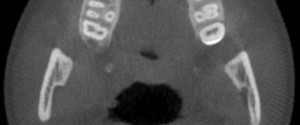1 min read
0
Anatomy Monday: Nasopalatine Canal
It’s time for the next canal: the nasopalatine canal. This canal may also be referred to as the incisive canal. It is seen on both intraoral radiographs and extraoral radiographs. The nasopalatine canal presents as a vertical radiolucent band between the roots of the maxillary central incisors superiorly to the…




